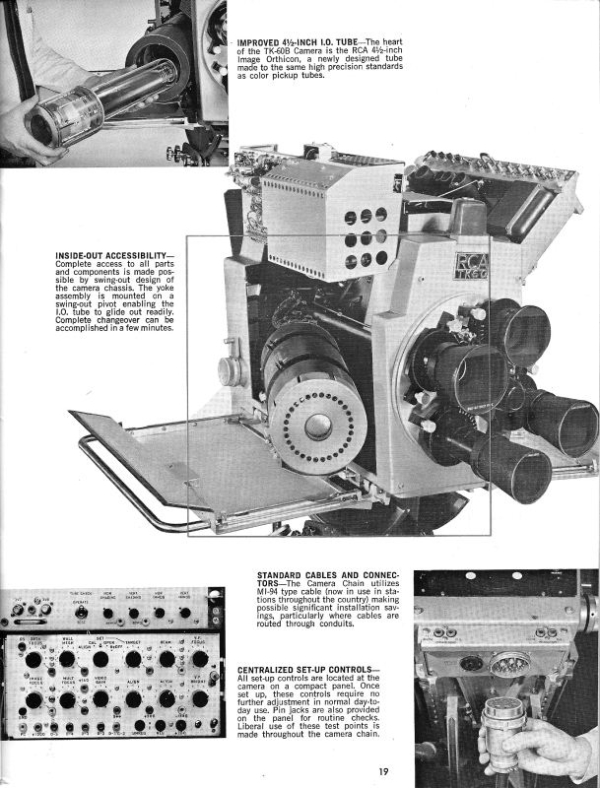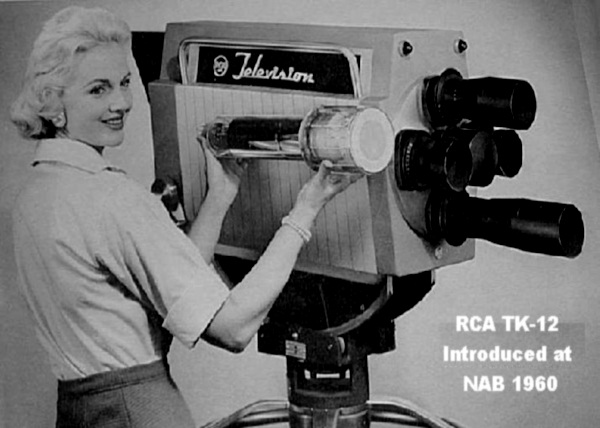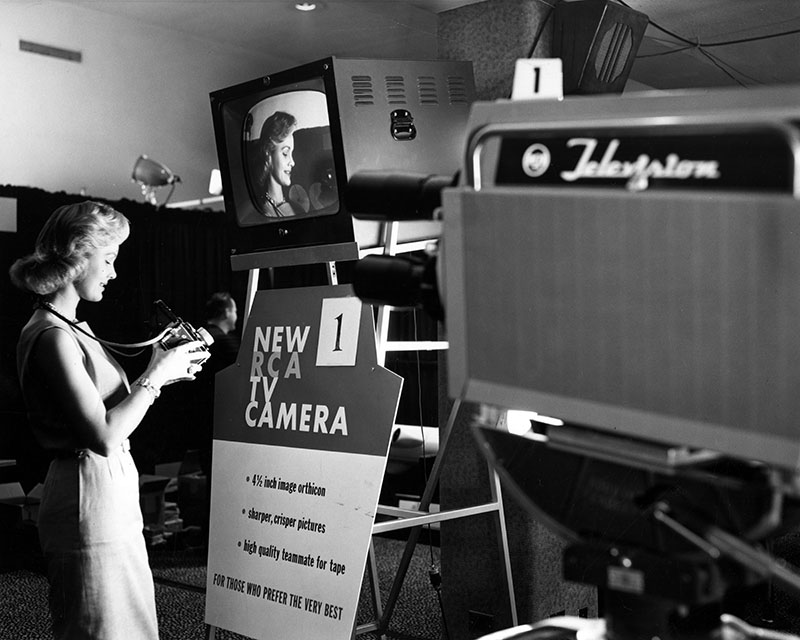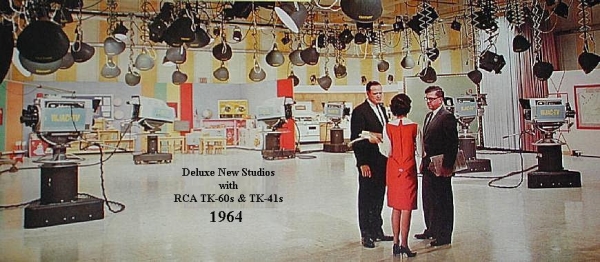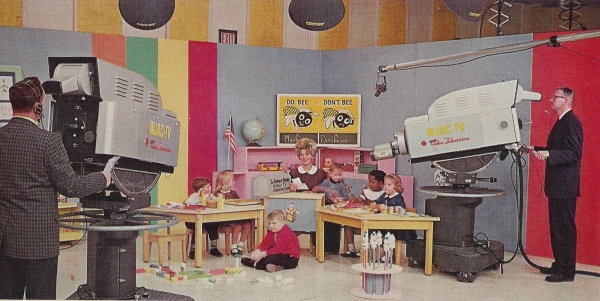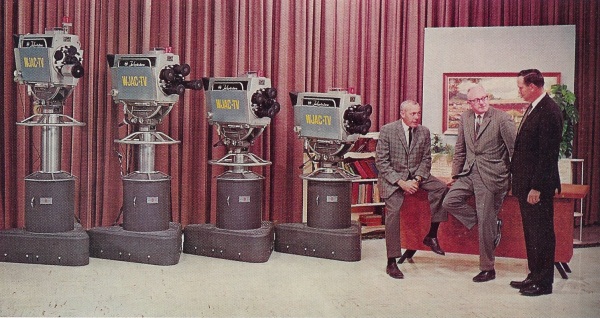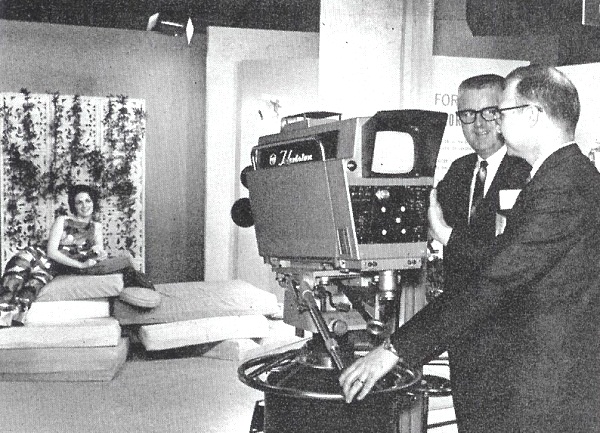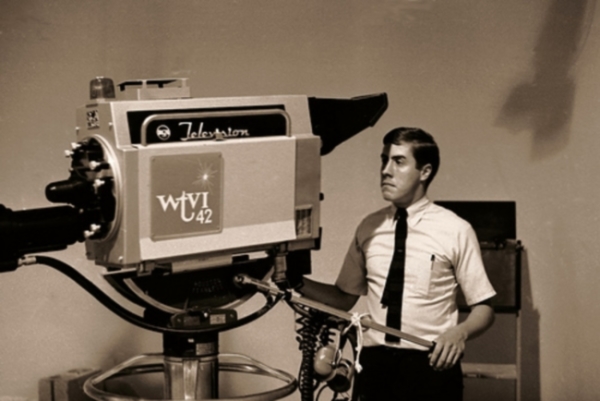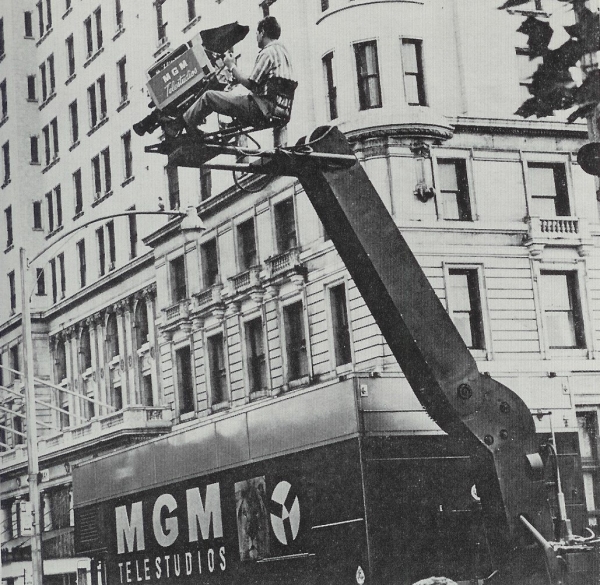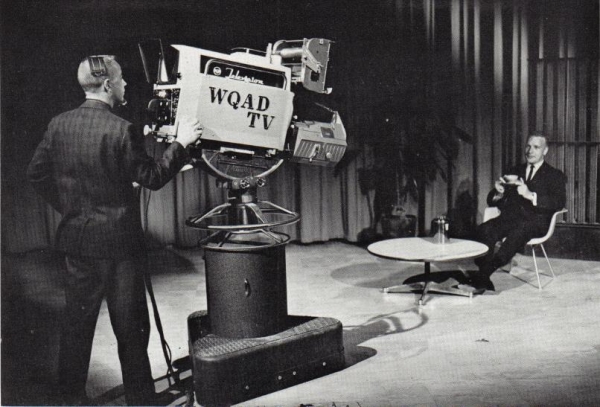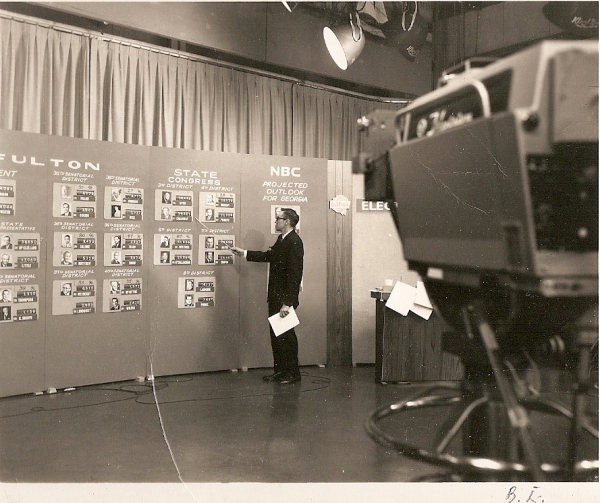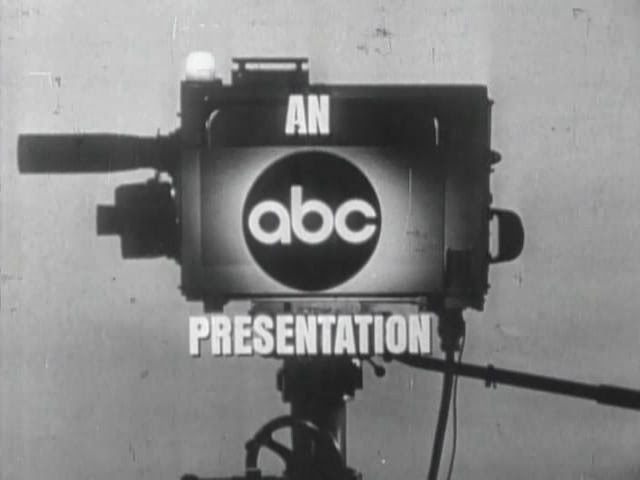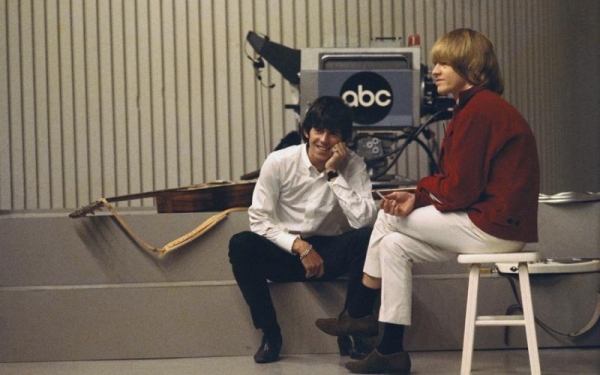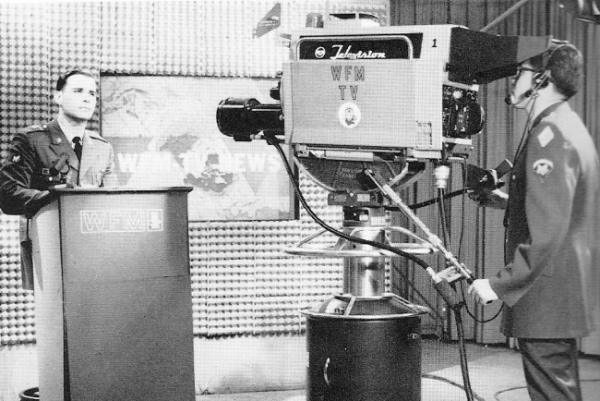I was about 13 when the Jerry Lewis Show debuted on ABC, live from the ABC – Jerry Lewis Theatre. This had been NBC’s El Capitan Theater at 1735 North Vine Street in Hollywood, and in early 1964, it became The Hollywood Palace Theater. With a two-year commitment from Lewis, ABC had refurbished the old theater for the show and bought four TK60s. That was in the fall of 1963, and the cameras were all over the set, but the show only lasted 13 weeks. ABC and Lewis called it quits as the show was not pulling any significant ratings. I had a Polaroid camera and would actually take pictures of our TV screen at home when the TK60s rolled into the shot just to have a picture of one of them. Now, I have two pristine TK60s of my own.
Here is a clip of Jerry Lewis on his 1963 show, singing Birth Of The Blues, with a little help from a crane mounted RCA TK60.
Here is a 1964 TK60 sales brochure WITH PRICES and even prices for the TK41!
Below, we see the TK60 in its original form, as the TK12, at the 1960 NAB convention. The introduction came eight years after the TK11’s introduction, and was the first of the RCA “New Look” line. Notice the doors are made of metal mesh, which was later used on the RCA TK42’s viewfinder enclosure, which was great for getting rid of internal heat, but not substantial enough as a door, for the wear and tear of remotes.
The mesh doors were done away with, and hard metal doors added, but that trapped the heat which hindered the TK12’s performance until a until a top vent and fan, and left side vent and fan was incorporated into the official TK60 model design, which finally became available in 1963. When the camera was reintroduced as the TK60 in 1963, another problem had been fixed, and that was a tendency for the IO tube to slide forward/backward on the focus sled when the camera was tiled aggressively either up or down.
Why was it called the TK60? Well, as they later did with the TK-76 ENG camera, that came out in 1976, RCA decided to name it for the year it debuted: 1960.
This camera made beautiful images and the video below is one of the best examples ever of their sharpness and clarity. Many did not know that NBC’s Color City Studios in Burbank ever had TK60s, but here is the proof, with a few shots of the TK60s in action taping a Bob Hope Special in Studio 1 in 1963.
This camera came about at a very transitional time in television. In 1960, NBC was on its way to a full color network, and many of the well-heeled affiliates were purchasing RCA TK41 color cameras. In ’62, RCA debuted the first version of the TK42, but it wasn’t in its final form and in production until ’65…the same year Norelco introduced its Plumbicon PC60. Oops. To make it even more interesting, RCA stopped making the TK41 in 1964.
In 1960, RCA knew there was still a need for a good black and white workhorse camera and that’s when they introduced the this camera, with a big 4.5″ Image Orthicon tube. RCA engineer Harry Wright had a hand in the TK60’s now famous look, and was responsible for carrying that look to the TK42s, 44s, 45s and 47s. His original sketches of these cameras are in the Archives section, so please take a look at that history.
Unfortunately, the TK12/TK60 problems were the beginning of the black eyes for RCA that landed in mass with the TK42. Had RCA addressed the heat problems faster in 1961, perhaps more TK12/TK60s would have been sold. By 1963, however, momentum was building behind color, and stations faced some though choices. Should they buy new monochrome cameras that may be outdated in a few years? Should they wait a year and buy PC60s or TK42s? Or should they buy TK-41s while they still could? I suspect everyone knew the TK60 would be the last monochrome camera made.
Once the TK60 finally came to the market, sales were good but not great. They made great pictures, and did so for many years into the color era. In fact, many stations continued to originate local programs in black and white long after the networks offered all color programming. It wasn’t unusual for stations to broadcast local shows in monochrome using a combination of color and black and white cameras.
Below is a picture that reinforces the difficult period in which the TK-60 was born into. We’re going to spend some time looking at this situation, and perhaps WJAC-TV is the best place to do this.
These are the new studios of WJAC in Johnstown, Pa., in 1964. The new studios were built after the sale of the station by Johnstown Automotive Company (hence WJAC) to the Tribune-Democrat. Notice the two TK41 color cameras and the four TK60s. The station had TK11s before this, and probably bought the TK60s and TK41s as a package. In the background, you can see the Romper Room set, and below we see TK41s shooting it live. Under that is a local spot being shot by a TK41.
Above there are four TK60s artfully arranged to the right of their news department heads. Below are two of the 60s on their news set; below that, more managers and a 60.
Now, if you think the arrangement of images on this page is odd because we are showing two different kinds of cameras…well, it is. But, just as odd was what we could see on local TV. I grew up in Atlanta and I can tell you that I have actually seen color (TK42) and black and white (TK60) cameras used together on the same shows. Usually, they would just mono out the color camera shot because now that they had four cameras instead of just two, they could be more artsy and shoot with four cameras instead of just two, even if two were just locked down for wide shots.
It honestly was quite a mixed-media process for nearly a year in Atlanta at WSB, WXIA and WAGA. I’m sure it was the same at WJAC. At WSB in Atlanta, they bought 2 TK60s just about a year before they bought two TK42s. There were never any TK41s in Atlanta stations…just 2 TK42s at WSB, two at WXIA, and then six Norelcos at WAGA. Only two TK41s were ever used in Georgia television; they were owned by WALB in Albany. One was donated to the Smithsonian.
Above and below are shots from the 1965 NAB showing the TK60 and TK42 together. That must have been a rather awkward situation for stations and RCA. Which cameras do you buy? CBS hated buying anything from RCA, so when the Norelco plumbicon cameras came out in 1964, the tide finally shifted in color’s favor.
Above is a rare sight. These are two shots of the same Canadian Broadcasting Company TK12 with an early Varotal III zoom lens. Notice the custom air vent the CBC engineers added on top. On close examination of the top image, it looks like there is a row of small square vent holes at the very top of the door just above the RCA Television badge. Photo courtesy of my friend and CBC retiree, Serge Bordeleau.
Above is a TK60 image from PBS affiliate WTVI in Charlotte NC.
Above and below WABL Baltimore TK60 photos courtesy RCA Broadcast News
Above, MGM Telestudios TK60s in action on a very large built-in boom arm. Below, an MGM mascot in training, out for a joy ride “in the bucket”.
Looking their catalogue best, a couple of factory-fresh TK-60 ads from around 1963.
Brand-new TK60 at brand-new WQAD in Moline Ill. Both debuted in 1963. That monster zoom lens is a Zoomar built for TK60s and Marconi Mark IVs, which both had an electronic iris control pod in the center of the turret. That prevented them from using the standard Zoomar, so these right-sided optic gearbox lenses were used, as opposed to the usual top center gear box layout for older cameras. Instead of having the zoom/focus demand rod run through the lens racking D handle on the back, through the camera and out the center of the turret, the TK60 and Mark IV rod hole ran through the camera on the right lower of each.
WSB Atlanta’s Ray Moore shows election night results on one of the station’s new TK60s, in 1966. I took this picture in the studio that night. Later, at the University of Georgia, I used these WSB TK60 cameras (and later WSB’s TK42s) in my directing and production classes.
ABC had a lot of TK60s and here are a few shots from the ABC Prospect Lot in Hollywood, and The Hollywood Palace.
Below are three images from RCA’s Broadcast News magazine, a couple from the Army’s Fort Meade, Md. studios, and one at the bottom that is very special…at least to me.
Believe it or not, the camera in the 3 photos above, from Richmond, Virginia PBS station WCVE, is the same one at the very top of this page. I have both of the WCVE TK60s, in mint condition.

